Set password, password protect USB data safely
If you want to protect the data on your USB device to prevent it from being dropped or stolen, please install the USB password lock software to increase the security.
There are 2 ways to create a password to protect the USB as follows:
1. Use software to create passwords for USB
Step 1: Download the USB Flash Security software at:
http://usb-flash-security.en.malavida.com/download
Step 2: Install USB Flash Security and use

A dialog box appears, select Agree -> Next .

Click Next to continue.

Select the USB you want to set a password and click Install .

Data notification dialog in USB will be deleted to set the password, click OK .
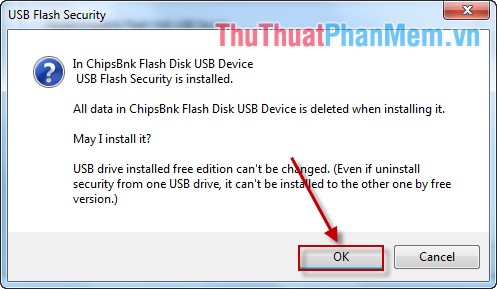
Enter the password in the Please set the passwword to the disk of USB section . You can create hints in case you forgot your password in the Please set a hint for the passwword to remember you section . Next, click OK to finish.
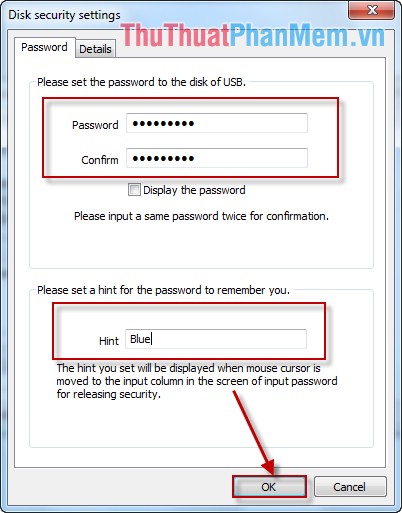
Select Begin the installation to start creating a password.
Note: After creating your USB will be renamed.

Click Close to end the process.

After the password is set, your USB password will be renamed:

Open USBENTER (G), which contains 3 files, open the UsbEnter file .

Enter the generated password and click OK .

In case you want to remove the password, do the following:
Step 1: Plug the USB into the device.
Step 2: Open the USB Flash Security software.
Step 3: Go to Operation -> Uninstall tab .

2. Use the BitLocker encryption feature available on Windows
This feature is only used with Windows 7 Enterprise editions, Ultimate, Win Sever 2008 and Win 8 onwards.
Step 1: Right-click the USB and select Turn on BitLocker .

Step 2: A dialog box appears and select Use a password to unlock the driver -> enter the password in the Type your password field and retype the password in the Retype your password field -> click Next .

Step 3: A dialog box appears, choose how to store the password, can save the file or print on paper. Here I choose to create a separate password file -> click Save the recovery key to a file .
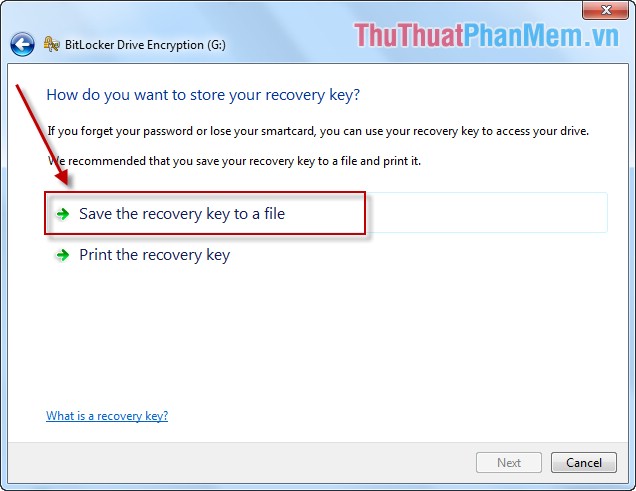
Step 4: Choose where to store the password file and select Save .
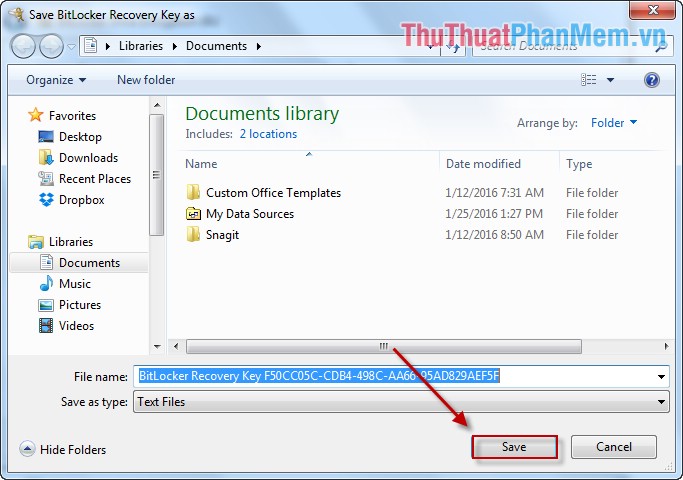
Step 5: After saving the password file, click Next to continue.

Step 6: Click Start Encrypting to start encryption.
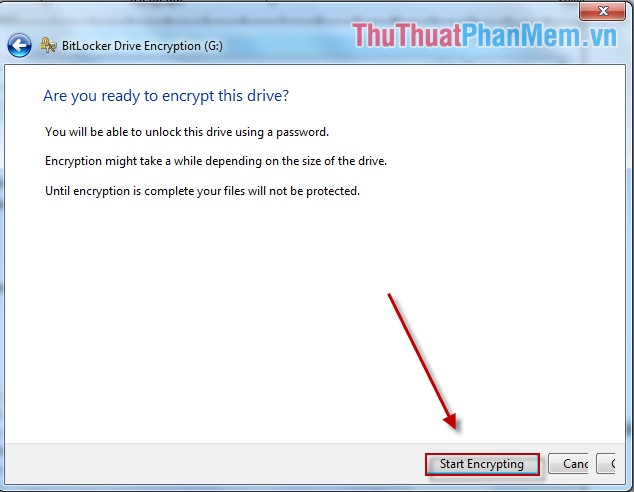
Step 7: The encryption process begins.
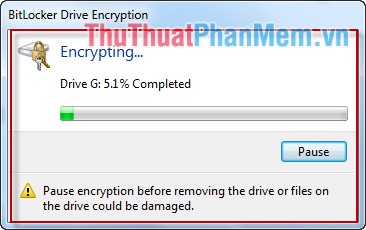
Step 8: A dialog box informs the process of successful password setting, click Close to finish.
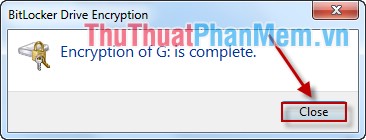
The resulting USB icon has a lock icon:
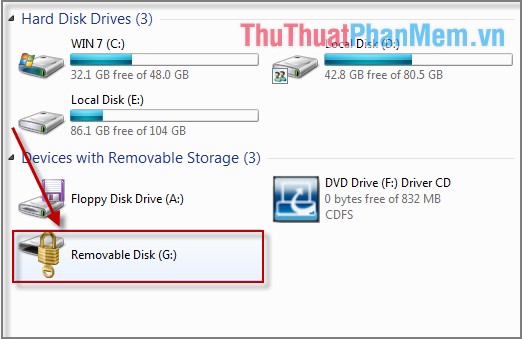
When you choose to open the USB, ask for a password and click Unlock to unlock.
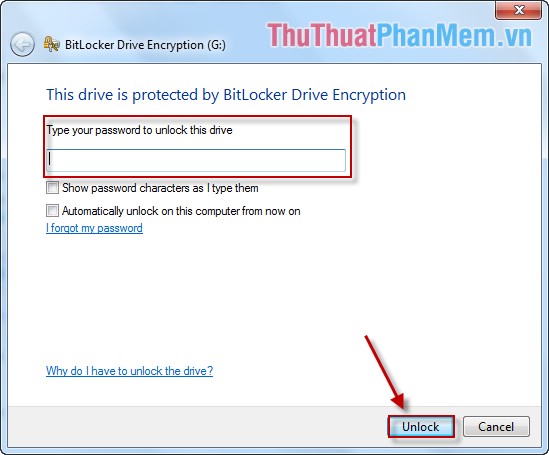
In case you want to delete the password, do the following:
Step 1: Go to Start -> Control Panel .
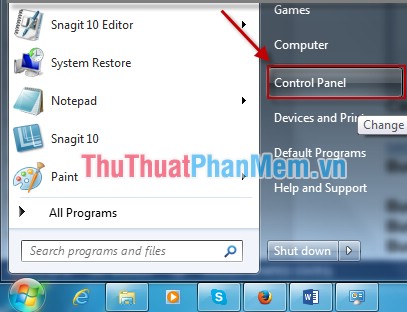
Step 2: Click BitLocker Drive Encryption .
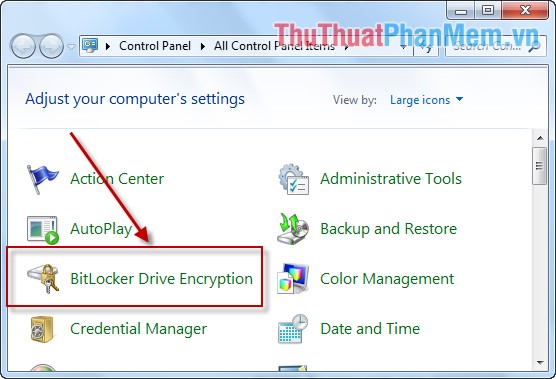
Step 3: Turn off BitLocker mode by clicking Turn off BitLocker .

Step 4: A dialog box appears and choose Decrypt Drive .

After the process has finished, click Close to complete.
Good luck!
You should read it
- How to use BitLocker to encrypt data on Windows 8
- SQL Server 2005 - Hack encrypted data by password
- How to set a password for the USB with Bitlocker
- How are BitLocker and EFS different?
- How to use Bitlocker to encrypt data on Windows 10 (Part 1)
- Instructions for encrypting USB or memory cards with Bitlocker on Windows 10
- How to use Bitlocker to encrypt data on Windows 10 (The last part)
- What is Zero-Knowledge Encryption? Why use this type of encryption?
May be interested
- How to set a password for the USB with Bitlocker
 how to set a password for the usb with bitlocker. to protect your usb from strangers from intruding and reading data inside, the best way is to set a password for the usb. there are many ways for us to set a password for our usb device, the simplest one
how to set a password for the usb with bitlocker. to protect your usb from strangers from intruding and reading data inside, the best way is to set a password for the usb. there are many ways for us to set a password for our usb device, the simplest one - Instructions for setting up Outlook data protection password
 to restrict unauthorized access to your outlook account to steal data or take any other action, you should create a password to protect data in outlook.
to restrict unauthorized access to your outlook account to steal data or take any other action, you should create a password to protect data in outlook. - How to Set Password for Folder and File in Windows
 you have some important documents in an important folder or file that you don't want others to see. the following article will show you how to encrypt or create a password to protect a folder or file to ensure that no one will be able to open it but you and the recipient.
you have some important documents in an important folder or file that you don't want others to see. the following article will show you how to encrypt or create a password to protect a folder or file to ensure that no one will be able to open it but you and the recipient. - How to set the password for the hard drive from BIOS / UEFI
 a solution to ensure data privacy is to encrypt the entire drive. another simple solution is to protect the drive with a password.
a solution to ensure data privacy is to encrypt the entire drive. another simple solution is to protect the drive with a password. - Protect yourself against IE security holes
 to help you avoid attacks that exploit the newly discovered ie vulnerability, we recommend some tips to help you protect your data safely.
to help you avoid attacks that exploit the newly discovered ie vulnerability, we recommend some tips to help you protect your data safely. - How to set a password for a column of data in excel
 in this article tipsmake will tell you a little trick that can protect data of only one column of data in excel.
in this article tipsmake will tell you a little trick that can protect data of only one column of data in excel. - How to set a password for a Windows 8 / 8.1 computer
 setting a password for windows 8 computers helps users to protect personal data in the computer, from unauthorized access by others.
setting a password for windows 8 computers helps users to protect personal data in the computer, from unauthorized access by others. - How to set a Windows 11 computer password, set a Windows 11 password
 setting a password for your windows 11 computer is an effective way to protect your personal information and important data. this article will provide detailed instructions on how to set a strong windows 11 password, as well as the benefits of securing your computer through a password for privacy and security.
setting a password for your windows 11 computer is an effective way to protect your personal information and important data. this article will provide detailed instructions on how to set a strong windows 11 password, as well as the benefits of securing your computer through a password for privacy and security. - Instructions on how to set a password for the drive on Windows 10
 password lock for external hard drive is one of the ways to protect data stored in hard drive. follow the following article to know how to set a password for an external hard drive
password lock for external hard drive is one of the ways to protect data stored in hard drive. follow the following article to know how to set a password for an external hard drive - How to set a password for Android phone messages
 this is a way to set a password for phone messages, which helps to protect sms messages safely and reliably. they work on message notifications to make sure other people can't see your message.
this is a way to set a password for phone messages, which helps to protect sms messages safely and reliably. they work on message notifications to make sure other people can't see your message.










 Recover deleted data with Recuva
Recover deleted data with Recuva Instructions for password management with KeePass
Instructions for password management with KeePass Prevent Virus infection from USB to computer by disabling MountPoints2
Prevent Virus infection from USB to computer by disabling MountPoints2 How to prevent viruses from USB by Autorun Eater
How to prevent viruses from USB by Autorun Eater Kaspersky Cleaner - Software to clean, remove junk files, optimize the best operating system
Kaspersky Cleaner - Software to clean, remove junk files, optimize the best operating system How to check Keylogger on computers without software
How to check Keylogger on computers without software